#prince ludlow
Text

I said on my main I was gonna clean up the Texas Mike doodle this week but I clearly lied because I decided to polish this up instead lol
Anyways, a kinda sorta sticker design for Prince Ludlow? I mean if I ever get around to making that shop I said I was =sweats nervously=
Either way, I hope you guys like him! I tried to add as many details from his original outfit as I could in this but without making the final drawing too busy!
36 notes
·
View notes
Note
Do you have any Monkees fic recommendations, I read all kinds of fanfics
Oh gosh! This is difficult because I love so many but I’ll try to pick out only a few! Also all the fics I read are very Davy based so my apologies in advance for that
Jork:
This one I read last night and instantly fell in love with. I love the characterisation and the tempo of it is amazing!! Five times Peter says I love you and one time Davy does
Jolenz:
This one is smut and I think it’s very hot. Micky has a possessive streak and Davy’s all needy.
Jonesmith:
This one is just so hot omg. Trans(male) Mike and smut, what more could you ask for??
This one is a long one with plenty of angst. It also has a suicide attempt and attempted sexual assault so read at your own risk. Davy gets a job on a film set and there’s some miscommunications. Happy ending!
This one is Davy jumping into the shower with Mike. It’s so adorable and sweet!!
No ship:
This one is Davy and Mike and it’s the cutest thing ever I swear. Davy’s sick and calls Mike mumma
This one is a birthday fic with angst because of a miscommunication (Davy doesn’t know its Mikes birthday and the guys don’t know it’s Davy’s). I’ve reread it lots because I love it so much!
This one is so bittersweet. It’s about the Monkees looking after kittens and it gets sad near the end when Davy reminisces about his mother and how he misses her but up until that its adorable!
This one is a fake Monkees episode about Davy being too short. Lots of humour and very cute
This one is a modern au about Peter being a YouTuber. Micky and Davy obviously mess with him
This one is short and sweet about Mike showing Davy how to make long distance calls home!
Other:
This one is Babyface and Ludlow slash and I love love love it!!!
I could go on for days and days because I’ve read nearly every Davy-centred fic on ao3. There’s more that’re not on ao3 that I’ll try dig up at some point but these are my picks for now!
#the monkees#davy jones#mike nesmith#peter tork#micky dolenz#babyface morales#prince ludlow#Jork#jonesmith#jolenz#monkees fic#fic recs
18 notes
·
View notes
Text
guys i’m on a long road trip and i’m passing through a town called ludlow!

as a monkees fan i’m very excited and my mother is confused as to why i’m lovingly saying “ludlow” in a british accent.
6 notes
·
View notes
Text

Cleaning up this :3
7 notes
·
View notes
Note
*flails wings* I have a drawing prompt idea!
Princess Gwen girl bossing the other Doppelgängers around.
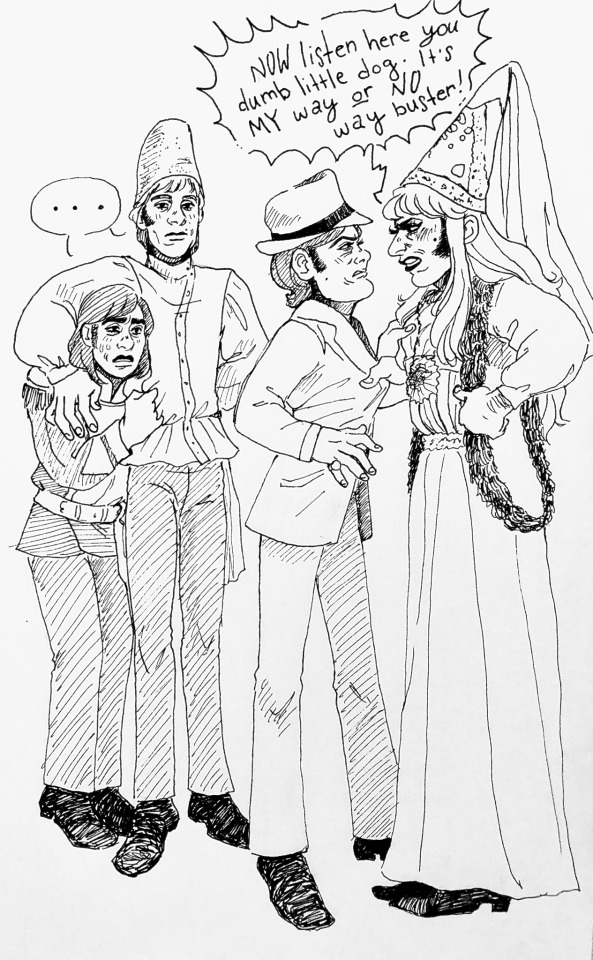
princess gwen and her doppel-gang
#jathis. she would eat them ALIVE!!!!!#babyface and gwen would have the best hate/spite relationship. and no one can tell me otherwise#princess gwen#babyface morales#alexei#prince ludlow#the monkees#the doppel-gang#rhubarb asks#another monkees drawing prompt!
42 notes
·
View notes
Photo



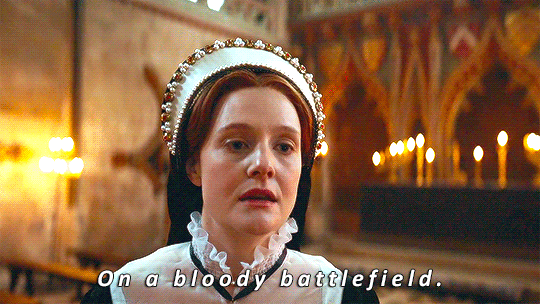
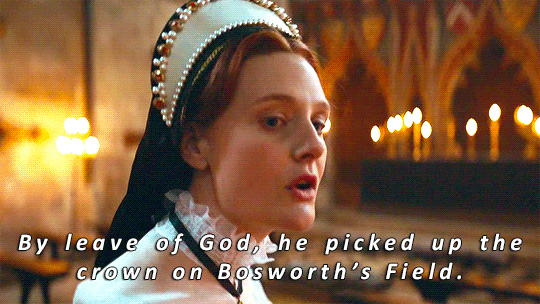
“The oddest thing about Mary’s reign, like that of her grandfather’s, was the fact that it happened at all. A hundred years before, the accession of a woman to the English throne was all but unimaginable. Sir John Fortescue, the most influential constitutional thinker of fifteenth-century England, had flatly denied that a woman could wear the crown. Nor was her sex the least of the obstacles in Mary’s path. Untrained for rule and unmarried, declared illegitimate and excluded from the succession in 1534, subsequently restored to it in 1544 (though with no revocation of her illegitimacy), a convinced Catholic who by 1553 stood almost alone against the religious policy of the Protestant regime, Mary looked likely to be baulked of her rights when the Duke of Northumberland married off Lady Jane Grey to his son, Guildford Dudley, and Edward VI willed the crown to Jane by virtue of her descent from Henry VII. The fact that the duke hoped to frustrate the accession of one woman by running another as her rival is a commentary on how much things had changed, as well as on the lack of a plausible male alternative. The account of how Mary overcame these formidable obstacles, a veritable Renaissance history of virtù dominating fortuna, is the most romantic and appealing episode in what has generally been seen as an unappealing and drab reign.” — Richard Rex, The Tudors
#historyedit#perioddramaedit#dailytudors#gifshistorical#becoming elizabeth#Mary I Of England#Rex tag#history#romola garai#becomingelizabethedit#beedit#Henry VII of England#succession#parallels#*mine#honestly i'd argue about the untrained for rule bit here#given she was sent to administer to ludlow as de facto prince of wales at age 9#if that's not training i don't know what is
243 notes
·
View notes
Note
Hello, I hope all is well. Princess Gwen x Prince Ludlow? (Please.)

he's shy. she isn't.
send art requests!
50 notes
·
View notes
Text

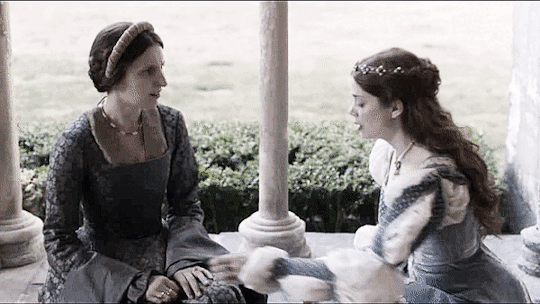

Katherine of Aragon & Margaret Plantagenet
They had known each other since Katherine first came to England. Margaret’s late husband, Richard Pole, had been Prince Arthur’s Lord Chamberlain, and she had accompanied him to Wales during the brief five-month marriage of Katherine and her first husband. Royal by birth, Margaret Pole was one of the most important ladies of high rank in the kingdom and one of the last Plantagenets at the Tudor court.
There a bond seems to have been forged between the two women, despite the fact that Katherine spoke little English and was 12 years younger than Margaret. The Spanish princess soon learned that her father had demanded the execution of Margaret’s brother before she arrived in England, and she was horrified. Feelings of guilt over the Earl of Warwick’s unjust execution pushed Katherine to seek Margaret’s friendship. Many years later, Margaret’s son, Reginald Pole, recorded that Katherine was “very much bound to recompense and requite us [the Pole family] for the detriment we had received on her account (although she was not in the least to blame for it), and to show us every kindness, having found by experience that in all her sorrows and afflictions, from no family of the realm had she ever received greater consolation than from ours, although for her sake we had received so many injuries”
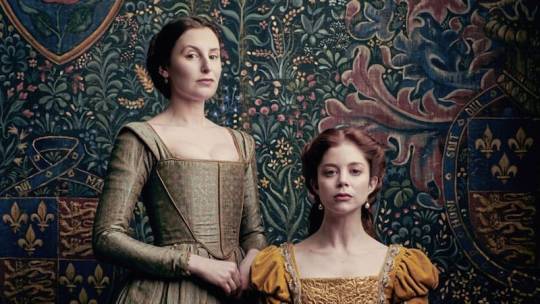
Arthur’s premature death at Ludlow parted them, but they continued to correspond until Henry VIII’s accession rescued Katherine from penurious widowhood and made her the queen consort she had always expected to be. Margaret had also known financial distress during this period (her husband died in 1504), but her loyalty and friendship were not forgotten. She came to court with her eldest son to attend Katherine’s coronation and was soon appointed one of the queen’s chief attendants. In 1512, possibly at his wife’s behest, Henry VIII granted Margaret’s petition for restoration of the earldom of Salisbury and she became a countess in her own right.
Katherine chose Margaret to be the governess of her daughter, Princess Mary. Margaret had formed a close bond with Katherine and treated her daughter with the same warmth. Katherine would gladly have seen a marriage between her daughter and her friend’s son Reginald. The Pole family fortunes crashed after Anne Boleyn became the second wife of Henry VIII. Not surprisingly, Margaret had sided with Katherine and Mary during the divorce struggle. Lady Salisbury was known for her devout Roman Catholic beliefs. When Princess Mary was declared a bastard in 1533, Margaret refused to give Mary's gold plate and jewels back to Henry VIII. When Mary's household was broken up at the end of the year, the sixty-year-old Margaret Pole asked to serve Mary at her own cost, but was not permitted. Five years after the death of Katherine of Aragon, Lady Salisbury was executed on the scaffold. Her death is one of the most tragic events in Henry VIII's reign.
Sources:
Linda Porter, Mary Tudor:The First Queen Sylvia Barbara Soberton, Great Ladies: The Forgotten Witnesses to the Lives of Tudor Queens
#catherine of aragon#katherine of aragon#catalina de aragon#margaret pole#margaret plantagenet#the spanish princess#charlotte hope#mary i of england#mary tudor#arthur tudor#henry viii#anne boleyn
27 notes
·
View notes
Text

Lady Diana at Ludlow Racecourse where Prince Charles finished second.
1981
38 notes
·
View notes
Text
"Given that we have no household accounts with which to plot his itinerary specifically, [Edward V] appears quite frequently with his parents and in some years for much of the time. He was with the King at Windsor in May 1474, in April and at midsummer; in company with his mother and Cardinal Bourchier at Windsor on 18 August 1477; at Westminster for the great council from 9 November and thereafter at the Parliament of January/February 1478; at the More in Rickmansworth (Herts.) on 19th May and with the King in November 1478; with him in May 1479, and with both his parents from November at Woking, for Christmas, and at Greenwich on 30 December 1479; at Greenwich with the King on 16 July 1480; with the King in February, May, August and in the winter of 1481; and with both parents for [royal Christmas celebrations over the years].
[We also know that Elizabeth travelled with him to Ludlow in 1473 and stayed there for most of the year, with Edward IV joining both of them in a few months. Elizabeth also accompanied him to Herefordshire in 1475 and was planning on accompanying him to Canterbury in 1483, though that trip got cancelled.]
-Michael Hicks, "The Prince in the Tower: The Short Life & Mysterious Disappearance of Edward V"
#princes in the tower#edward v#kinda funny that we don't have his household accounts and don't know his itinerary and we can still tell he spent most of his time with#his parents lol#we know EW kept her kids very close to her throughout her queenship and Edward evidently seems to have done the same#also this book was very annoying in some aspects but I'm not getting into that right now#elizabeth woodville#edward iv#queue#my post
10 notes
·
View notes
Text
Davy: Where are your parents?
Prince Ludlow: What are parents?
Davy: Yeesh, that’s the saddest thing I've ever heard.
21 notes
·
View notes
Text
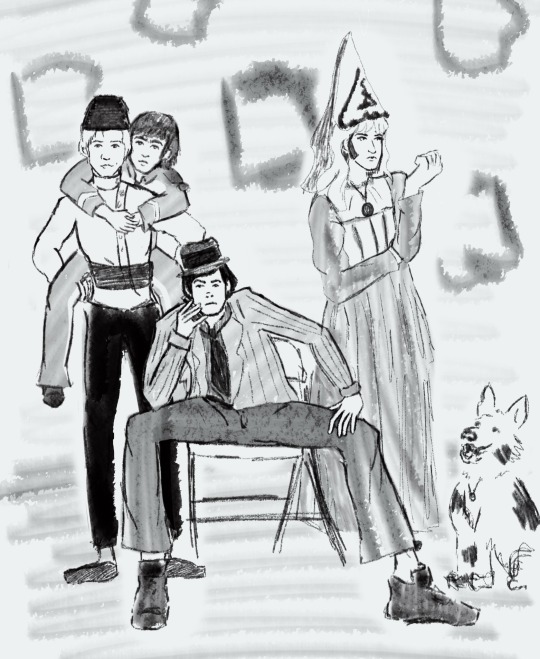

Family portrait!
Happy birthday to @jathis ! I adore your series on ao3 so I decided to draw a little something, I hope you like it!
#i know this isn’t great but people are not my strong suit i apologise#the monkees#davy jones#mike nesmith#peter tork#micky dolenz#princess gwen#prince ludlow#Babyface morales#alexei#monkees art#my art
15 notes
·
View notes
Text
•Studying the demise of a prince: the death of Arthur Tudor, Prince of Wales.•
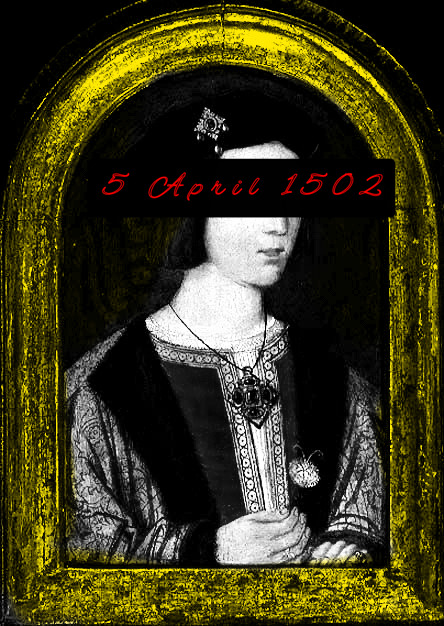

“Arthur's return to Ludlow as a married man with his wife beside him was a cause for celebration. Feasts, festivals and entertainments supplied plenty of scope for the renewal of old relationships and the building of new ones. The early spring of 1502 was surely one of the most joyous times of Arthur's life.
It was possibly a high-point for King Henry. He was drawing up plans to deal with his latest rebel, the Earl of Suffolk, but even worries about another Yorkist claimant might not yet have diminished the shine from the success of his alliance with Spain and the ceremonies that cemented it. Whatever spectacles unfolded are hidden from us by a lack of evidence, however, and the first indication that they had reached Ludlow was the notification of Arthur's illness and death at the start of April.
Detail about the cause of Arthur's decease is imprecise. This results partly from the vagueness of medical knowledge available at the time and the fact that the information comes from commentators on the social side of courtly life and not from within the medical circles that attended the prince when he became ill.
The author of the best source, the record of Princess Catherine's arrival, was not at Ludlow and had not had a chance to talk in detail to those that had seen the prince during his very rapid decline.
It is in the record of the king's reaction to the news of his son's death that we get a deeper sense that this record was written by an eyewitness. It does also supply impressive detail on how much Arthur was loved by his parents.
The prince died on Saturday 2 April 1502 at Ludlow, between six and seven o'clock in the evening. His chamberlain, Sir Richard Pole, assembled Arthur's council and drafted letters to the king and court, then at Greenwich Palace. (…)
Henry VII's councillors received the letters first and, armed with the dreadful news, sent for the king's confessor, an observant friars.
The councillors asked the confessor to give the news to the king, in expectation that he would need much personal and spiritual comforting. On the Tuesday following Arthur's death, 5 April, the king was awoken earlier than usual and the confessor asked everyone else to leave the chamber.
After introducing the most painful subject with the Latin phrase, 'If we have received good things by the hand of God, why should we not receive evil?’, he then broke the news that Arthur had died.
Henry immediately sent for the queen so that they ‘wold take the peynfull sorowes togyders’. The writer of the account must have been on hand within the household, since he heard Queen Elizabeth's words of support to her husband.
The arrival of an express rider from Ludlow would certainly have drawn attention as the household staff of Greenwich Palace rose as part of their daily routine of service to the king and queen.
Elizabeth was recorded as explaining how the realm remained safe in King Henry's hands and how although he had been an only child he was preferred by God into the estate that he now enjoyed.
Their other children, Prince Henry and princesses Margaret and Mary, were healthy and preserved by God, and both she and the king were young enough to have more children, if it were God's will that it should be so.
She then comforted the king and was thanked for her loving words. When she returned to her own chamber, however, she was overcome with emotion:
[the] natural and moderly remebraunce of that great losse smote hir so sorrowful in the hert that those that were abought her were fayn to send for the Kyng to compforte her.
The king then came ‘of true, gentil and feithfull love’ without being informed of his wife’s distress. It was his turn to offer words to alleviate her pain as they both struggled for enough composure to give thanks for their son’s life.
This evidence offers one of the few instances of everyday human emotion apparent in descriptions of the life of Henry VII and Queen Elizabeth. These powerful hints of heartfelt feelings and humanity in the personality of the king are important reminders of just how incomplete is the evidence used by modern scholars to judge personal characteristics.
The king is often identified as cold and remote, but this is to judge him on evidence of how he governed and defended his throne. Those type of records would seldom reveal anything substantial on the private nature of a monarch that lived over 500 years ago.
If we do see a little more warmth and concern in Henry's actions, then it is natural to think that some of those traits would have been passed on to his son - especially in the period of intensive contact that father and son experienced in October and November 1501.
Royal children were seldom brought up in close proximity to their parents, and were particularly remote from their fathers. For Henry and Elizabeth, the difficulty of sending their first child into the care of other people, miles from wherever they spent time, was surely one of the more harrowing decisions of their lives.
At the time that decision was made by Henry VII and his wife, the regime was continually beset by plotters and enemies intent on pulling Henry VII from the throne.
King Henry saw Arthur's departure as essential to the sustainability of his family's ongoing rule. By separating the king and his heir, Henry was following a recent tradition among English rulers.
In the circumstances of his accession, however, it was more of a risk since the loyal core of Tudor friends and allies was so small. The regime's opponents were already seeking to make traitors of those Yorkists that had lent Henry VII their military power and service since 1485.
(…) It is also unclear if the prince's household suffered many other deaths at that time. All of the chief officers in the prince’s service deatived this period of infection, but there is some suggestion that Princess Catherine was quite ill at the same time as her husband.
That would not be surprising if the disease that killed him was a form of the sweating sickness which would have been passed through close physical contact and the transmission of infection in bodily fluids. She certainly did not attend his funeral, although a chair had been prepared for her; but whether this was due to her own illness or court protocol is uncertain.
If Catherine shared some of her husband's symptoms when few others in the royal household did, then it suggests that she and her husband had spent considerable time in each other's company - to the point that their proximity contributed directly to a fatal illness striking down Arthur in 1502 when it might have spared him in previous years…”
Cunningham, S. “Prince Arthur: The Tudor King Who Never Was”.
#tudor dynasty#Arthur Tudor#Prince Arthur#Arthur Tudor Prince of Wales#Prince of Wales#House of Tudor#Henry VII#Elizabeth of York#early Tudors#historian: Sean Cunningham#certainly a more reliable historian than others that I’ve seen…
53 notes
·
View notes
Text

Proto Prince Ludlow sticker design lol
7 notes
·
View notes
Note
please consider for a drawing prompt
the Doppel-Gang
MODERN AU

so…..they would form something like the hype house……
#the doppel-gang modern au#the monkees#princess gwen#babyface morales#alexei#prince ludlow#rhubarb asks#another monkees drawing prompt!
30 notes
·
View notes
Text
It's not clear at exactly what stage Arthur himself was dispatched to join his council and make a home at the Welsh border. However, in April of 1493 he made a nominal appearance on the bench in Herefordshire to dispense justice. In November of that year, the King granted Arthur the lands associated with the Earldom of March, including Ludlow Castle. Instructions to some of Arthur's senior household officers to keep the peace in Herefordshire were issued at a similar time, which suggests that they were in residence. As such it's most likely that Arthur had relocated during the course of 1493, when he was aged either 6 or 7.
— Gareth Streeter, Arthur, Prince of Wales: Henry VIII's Lost Brother
#not really a fan of this book tbh#anyways imo 7 (or 6 going on 7) is the most likely age#as it was considered the end#of a man's first age cycle#arthur tudor#henry vii#historian: gareth streeter
14 notes
·
View notes